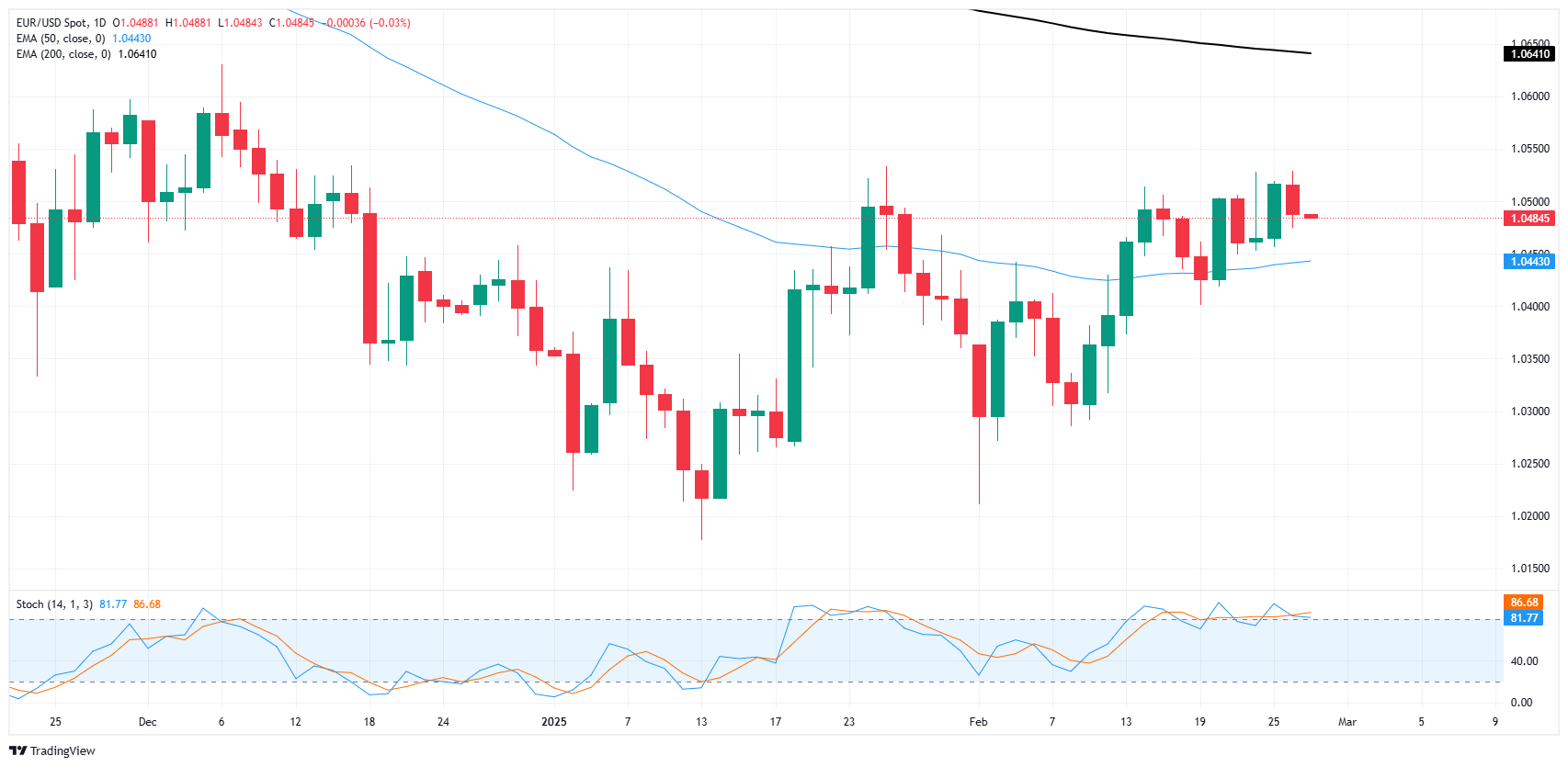EUR/USD pulls back as tariff threats weigh
- EUR/USD shed 0.25% on Wednesday after new tariff threats hit newswires.
- US President Trump insists 25% tariffs are coming for the EU.
- Key US inflation figures are set to close out the week.
EUR/USD pulled back on Wednesday, shedding around one-quarter of one percent after US President Donald Trump insisted that tariffs are coming for the European Union too, not just Canada and Mexico.
Always eager to capitalize on opportunities, President Trump introduced new tariff threats on Wednesday, extending proposed import taxes to include a 25% tariff on European goods. While details are still vague, he outlined his intention to impose further tariffs on European products, specifically mentioning “cars and other items." He reiterated that the US does not “need” Canadian crude oil or lumber, stating that there will be tariff packages of 25% on both Canada and Mexico. Nevertheless, he again delayed the implementation, revealing that the confirmed tariffs on Canada and Mexico will take effect on April 2nd.
Forex Today: Markets’ attention remains on US economy and tariffs
The group of nations not facing tariff threats from the White House is rapidly diminishing. Should a full-scale trade war unfold, the Euro has now been added to the list of vulnerable currencies that may experience increased volatility due to shifting risk sentiment, as investors struggle to keep pace with the frequent updates emanating from the White House.
This week, UK data is relatively sparse, but a wealth of US data is available for investors to analyze as the trading week progresses. On Thursday, US Gross Domestic Product (GDP) growth figures for the fourth quarter of 2024 will be released, along with updates on Durable Goods orders for January.
The most significant data point this week will be the US Personal Consumption Expenditure (PCE) inflation report set for Friday. Inflation indicators in the US spiked at the beginning of 2025, and investors are looking for evidence that any immediate inflationary pressures do not seep into core inflation metrics.
EUR/USD continues to churn on the high side, but top-end momentum remains tepid. The pair is holding north of the 50-day Exponential Moving Average (EMA) at 1.0450, but a hard barrier is priced in from the 1.0550 level.
EUR/USD daily chart
Euro FAQs
The Euro is the currency for the 19 European Union countries that belong to the Eurozone. It is the second most heavily traded currency in the world behind the US Dollar. In 2022, it accounted for 31% of all foreign exchange transactions, with an average daily turnover of over $2.2 trillion a day. EUR/USD is the most heavily traded currency pair in the world, accounting for an estimated 30% off all transactions, followed by EUR/JPY (4%), EUR/GBP (3%) and EUR/AUD (2%).
The European Central Bank (ECB) in Frankfurt, Germany, is the reserve bank for the Eurozone. The ECB sets interest rates and manages monetary policy. The ECB’s primary mandate is to maintain price stability, which means either controlling inflation or stimulating growth. Its primary tool is the raising or lowering of interest rates. Relatively high interest rates – or the expectation of higher rates – will usually benefit the Euro and vice versa. The ECB Governing Council makes monetary policy decisions at meetings held eight times a year. Decisions are made by heads of the Eurozone national banks and six permanent members, including the President of the ECB, Christine Lagarde.
Eurozone inflation data, measured by the Harmonized Index of Consumer Prices (HICP), is an important econometric for the Euro. If inflation rises more than expected, especially if above the ECB’s 2% target, it obliges the ECB to raise interest rates to bring it back under control. Relatively high interest rates compared to its counterparts will usually benefit the Euro, as it makes the region more attractive as a place for global investors to park their money.
Data releases gauge the health of the economy and can impact on the Euro. Indicators such as GDP, Manufacturing and Services PMIs, employment, and consumer sentiment surveys can all influence the direction of the single currency. A strong economy is good for the Euro. Not only does it attract more foreign investment but it may encourage the ECB to put up interest rates, which will directly strengthen the Euro. Otherwise, if economic data is weak, the Euro is likely to fall. Economic data for the four largest economies in the euro area (Germany, France, Italy and Spain) are especially significant, as they account for 75% of the Eurozone’s economy.
Another significant data release for the Euro is the Trade Balance. This indicator measures the difference between what a country earns from its exports and what it spends on imports over a given period. If a country produces highly sought after exports then its currency will gain in value purely from the extra demand created from foreign buyers seeking to purchase these goods. Therefore, a positive net Trade Balance strengthens a currency and vice versa for a negative balance.

